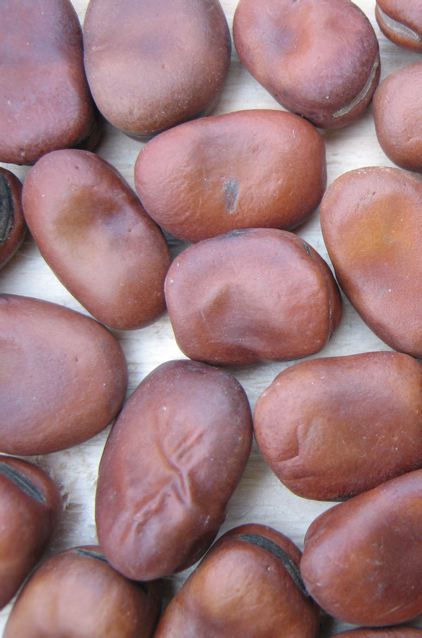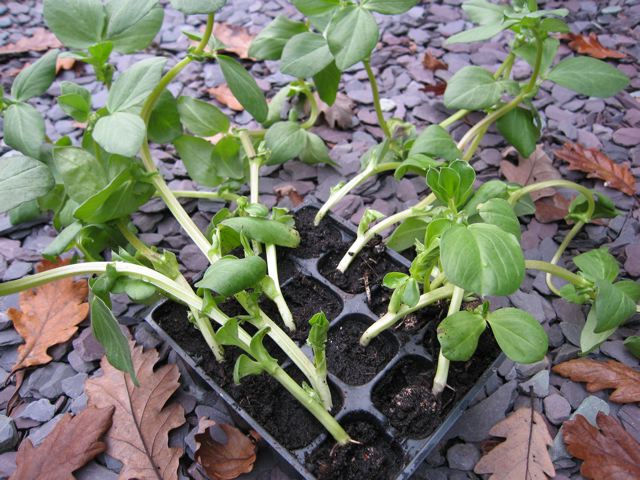Is your purchase really necessary? Making gardening easy is one thing, but broad bean seedlings by post is surely a convenience too far.
The warning signs have been flashing for a while now, but we’ve finally reached the point where we need to hit gardening’s emergency stop button. It’s not an alarm bell to signal the onslaught of yet another imported pest or disease – there are already enough of those to deal with. Nor is anything essential running out, causing us to scrawl a green-thumbed SOS in our topsoil. Unless, that is, a shortage of common sense and a growing disconnection from what gardening is all about counts as an emergency. After uneasily opening a cardboard box marked ‘live plants’ that I’d ordered as a tryout, the only conclusion I can reach is that gardening – or at least the industrialised part of the trade which claims to serve us – is entering crisis mode.
The box didn’t contain some overmanufactured, overpackaged plastic tat – synonymous with much gardening nowadays. It contained a plastic multi-cell tray, two plastic bags and a leaflet, but what had me reaching for the panic button was its living passengers: a dozen broad bean plants. Yes, that’s right: broad bean plants arriving by post in… late October.

Broad beans are perhaps the toughest, hardiest and easiest of the vegetables we grow. Harvesting delicious beans is only the icing; their roots fix nitrogen and add organic matter to the soil, their bee-beloved flowers smell divine, and you can eat their shoot tips, as well as the juvenile pods. To top it all, their sappy shoots make perfect compost fodder.
They have big, obvious seeds which the most inexperienced and utterly cack-handed of newbie gardeners couldn’t fail to sow. Drop seed onto soil, push seed into soil, seed grows. That’s it. A belt-and-braces variety such as ‘Aquadulce Claudia’ will shrug off whatever autumn and winter chucks at it (here that includes torrential rain, gales, vicious hail, cutting frosts, crushing snow, slugs, nibbling rodents and rifling ravens). A packet costs around £2 to £3, making each seed only a few pence.
Once we’ve pushed that big bean under, it sets about germinating – in cold, wet soil that sees most other veg seeds rot to mush – and sends out thick, anchoring roots. Some weeks later, a jaundiced, curved seedling breaks the surface into dark, shortening days. It greens up and grows slowly on, making a stocky, winter-hardened little plant just a few inches tall, while its roots delve ever deeper. Come spring, those roots are on standby as warmer days trigger the fast-growing journey to flowers and then pods, that finally ends on our plates. There’s no cosseting needed along the way. Broad beans can outshine all other contenders for the crown of easiest, toughest and most resilient vegetable – so why did I get those dozen plants in the post?
The answer is that our desire to grow some of our own food – driven by enthusiasm, a hankering for self-reliance, or just stark necessity – is now being ruthlessly commercialised and exploited by companies that ought to know better. But as avarice lures businesses to turn a profit on the distant horizons of common sense, gardeners, especially new ones, risk being dragged into a home-grown crisis zone.
I pitied the beans I lifted out of that cardboard box. It was bad enough that they were crammed in around an inch apart, worse still that most were already pushing eight inches tall. As soon as I’d eased out the emaciated weaklings, they flopped over; so might you if you’d been nursed in the controlled, coddling conditions of a commercial greenhouse (which you never actually needed), and then ridden with the Royal Mail.
I wouldn’t normally even think of sowing overwintering broad beans outdoors until mid to late October (with maybe some backups under cover), and I wouldn’t dare hope for eight inches of growth until the spring spurt. I didn’t relish toughening up these normally rugged contenders ready for the vagaries of a North Wales winter, and then equipping them with essential hazel life supports. Autumn’s clemency would have made things worse, duping them into even more weather-prone growth which wouldn’t have withstood a wounding hailstorm. How I wished I’d stuck to ‘drop seed onto soil, push seed into soil’, where nature, not money-grubbing, would have set the pace (and not have set me back nudging £13 – a quid a plant).

The only packaging broad beans need is a paper seed packet, which can eventually be scrunched up and composted. They don’t need an (albeit compostable) cardboard box, never-ever-rot packing tape, a plastic tray filled with nature-wrecking peat-based compost, plastic bags to stop any moisture seeping into the cardboard, and a vague ‘instruction leaflet’. Broad beans don’t need to start life in intensive care and then be shipped around the road network, before being planted out, drawn and weak, to run autumn’s gauntlet. Drop seed onto soil, push seed into soil?
But surely the most damaging lesson from this over-the-top treatment of our most indomitable vegetable is that being taught to first-time food growers: broad beans (and by extension other vegetables) are difficult to start off and it’s better if someone else – an ‘expert’ – does it for you. We’ve visited this gardening netherworld before, when companies tried to flog carrot seedlings through our letterboxes. Mail order catalogues already set my eyebrows twitching when I see runner beans and cucurbits offered as young plants (are they really so tricky?), but broad – drop seed onto soil – beans?
Much of the satisfaction of growing food comes from knowing what’s happened to what we eat, and from knowing that we’ve turned a long, energy- and resource-intensive food chain into earth-friendly food footsteps. Sending out eight-inch weaklings by post turns the benefits of home growing upside down. It shows us that even dead easy veg can fall prey to the relentless fetishising of ‘added value’, and it delivers a misleading gardening message with every box. It’s the flagship symptom of an industry that is, in parts, running near empty on ethics and common sense.
Driven indoors by serial tempests, I never did get the weaklings planted, and it’s a good job; their frail shoots were no match for gales or hail, so they loitered awhile to ‘toughen up’. Then I spotted their salvation: from around the base of the toppled stems, new, pluckier shoots were bursting. All I needed to do was chop off the useless, much-travelled shoots and use what was left. Finally planted out, they look for all the world just like – well – seeds that were, not long ago, pushed into the soil…
Text and images © John Walker


